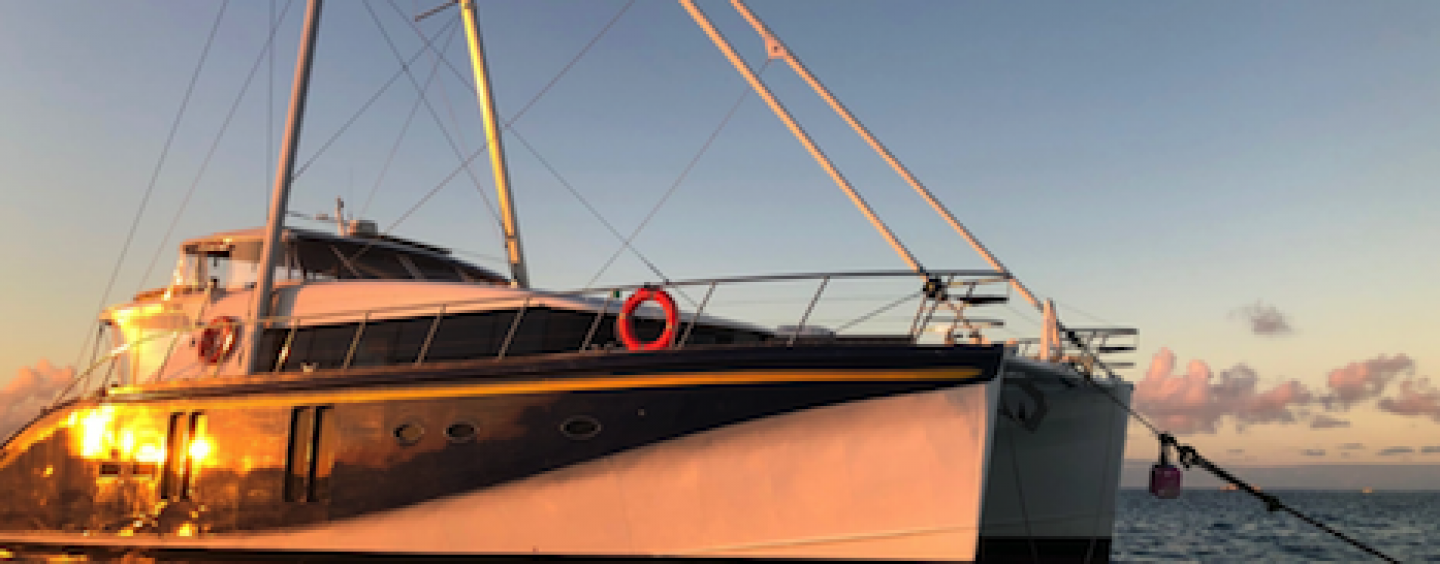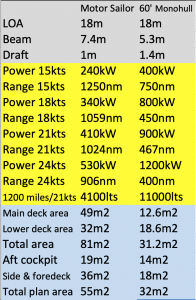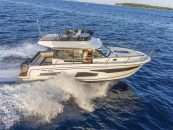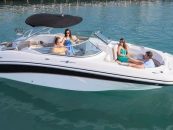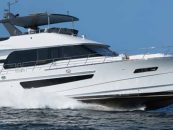From the 1950’s to the 1970’s, motorsailors were a common sight at most marine centres around the world. Then with the advent of cheap fuel and smaller production diesel engines, the motorsailors all but disappeared. The powerful cruisers appeared with huge engines pushing the new versions of 50- and 60-foot flybridge cruisers along at speeds generally up to 25-30knots.
Now with escalating fuel prices and some heat on the economy in general, one enterprising designer has re-introduced a motorsailor. Instead of a cabin cruiser with a small mast and sail, a totally new focus has been taken with this vessel, Passion, whose owner, Stuart Ballantyne, has been keen to develop in conjunction with the designer.
Starting with an 18m Crusader catamaran from the Oceanic Design and Survey office on the Gold Coast, the designers used a 1m draft, on the theory that if you run aground, you can walk ashore with a measure of dignity. This hull was optimised at the Australian Maritime College Tank Test facilities in Launceston for both speed/power performance and seahandling.
Anyone who has headed south from the Whitsundays knows about hobby-horsing into head seas. This new hull incorporates elliptical bulbs to improve the speed/power performance and significantly dampen the pitching motions. As a side benefit, these bulbs attract dolphins who will sit comfortably in front of each bulb, their tails at an angle of 15 degrees, getting a free ride from the force field around the bulb. This same forcefield cancels the bow divergent wave seen peeling off high-speed cruisers without bulbs. The wave resistance is the major absorber of horsepower, so the bulb optimisation was studied carefully.
Two Yanmar 6LP 310HP diesel engines were installed, and gave an impressive maximum speed of 23.5 knots at maximum load, with no bow wave, and that actually looks quite strange. The diesels were installed with Yanmar V drive gearboxes to make the engine rooms easily accessed from the aft cockpit stairs for servicing, but mainly to achieve maximum cabin space in each demihull. The noise and vibrations being further aft were added bonuses.
The aluminium hull was coated internally with primer and foam-coated for acoustic and thermal insulation. Closed cell foam was used to fill the bulbs and other hull and tunnel voids, totalling 13.5 cubic metres, making her unsinkable.
The internal main deck area has a lounge forward for eight people. Aft of this is the galley to port and dining for eight to starboard. While many cruising yachts have the galley below the main deck, the Crusader designers have heeded the wishes of female cruisers that prefer to be in the centre of activity.
The aft cockpit is the width of an 80’ monohull, and able to seat 12 to 14 adults. This has been enhanced by the closure of a starboard quarter access, and the vessel is geared for steering and berthing on the port side or stern only. While you may think dual-side access is important, ask yourself when you have come off or on an aeroplane on the starboard side?
The steering position is on the flybridge port side, and the owner can easily berth port side to, or stern to, and having the propellors 5.3m apart. This makes the manoeuvring and berthing quite easy, even without a bow thruster, according to the owner.
The starboard side has a low angle stairway with bow rollers to easily launch or recover a 4.2m dinghy or jetski, negating the need for an on-deck crane.
The accommodation has two double cabins in the hulls, with toilet/shower facilities. In the starboard hull is a navigation/plotting station and a fully equipped office with computers, router, printer and scanner for the owners to maintain contact with family or business On the main deck is a forward lounge area with seating for eight. Aft of this is the galley on the port side, and adding a table for six to starboard.
For the unusual motor sailor rigging, a New Zealand A-Frame design was selected with raked masts, and two forestays with roller furlers and a 60m2 sail on each side. The designer admits it is a lazy way of sailing. Many cruising sailing boats just use the jib and run the motor in idle to maintain batteries and the hot water.
In trials with 20kt beam winds, the motor-only speed was lifted from 8 to 10.5 knots, with the weather sail at 20m2 and the lee sail at 40m2. Such an increase requiring engine power would use an extra 22 litres per hour.
The vessel has four 470W solar panels supplied by the Gold Coast Solar Marine Systems, a 3500W Victron Quattro inverter and 500AH of battery storage, boosting the 5kw genset AC power when needed, such as preparing dinner. The owner chose an electric barbecue from the Gold Coast-based Sovereign Barbecues, as a safer and cleaner choice than the gas options.
The Schenker watermaker provides 30 lts/hr at very low electrical consumption and time-switched for daylight operation when the solar system is providing good base load. In addition to this, the large plan area has a rainfall collection system. After three minutes of rainfall, when salt and dirt are washed off, the owner switches the Y valves diverting clean rainwater to the 800 litre tank.
On the inaugural voyage from Gold Coast to Port Douglas, Passion achieved 11 lts/hr for a 10- knot speed northbound and 14lts/hr for 10kts southbound where there was next-to-no-available wind energy. This is unbeatable fuel consumption for a 60-ft spacious cruising vessel, and certainly makes long-distance cruising far more affordable.
Oceanic Designs have completed the design of a 68-footer (21m) Crusader catamaran with four double cabins, again with an optional motorsailor rig for those people concerned about lowering the carbon footprint, without having to go for a full sailing catamaran.
For more info: Oceanic Designs PH: (07) 55-295788 Chris Hutchings PH: 0414-557-797
Editorial by Andy Kancachian
(Published in the October – December 2019 edition)






















